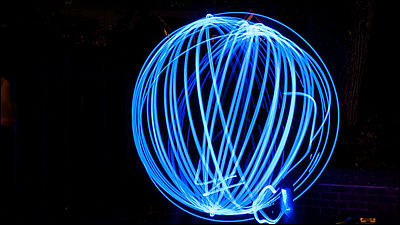Active ingredients contained in the most used herbicides in the world affect 'animal cramps'

Developed in 1970 by the American chemical company
Roundup and glyphosate's impact on GABA to elicit extended proconvulsant behavior in Caenorhabditis elegans | Scientific Reports
https://www.nature.com/articles/s41598-022-17537-w
FAU | Study First to Link Weed Killer Roundup® to Convulsions in Animals
https://www.fau.edu/newsdesk/articles/weed-killer-study
Roundup is known to be a very powerful herbicide and will kill crops that should not be weeded if it comes in contact with it. Therefore, in recent years, genetically modified crops resistant to glyphosate, the active ingredient of Roundup, have been introduced all over the world, and the planted area is rapidly expanding. The proportion of glyphosate-tolerant crops in the planted area of genetically modified crops has reached about 80%, and it is estimated that 6.1 million tons of Roundup were sprayed worldwide in the decade from 2005 to 2014.
Roundup is now used not only in large-scale farms but also in home gardens, and it is expected that the amount of Roundup used will continue to increase over the next few years. However, researchers have voiced that glyphosate is ``carcinogenic,'' and the impact of Roundup spraying on health is being viewed as a problem.

by
In addition, glyphosate is also concerned about 'potential effects on the nervous system'. So a research team at Florida Atlantic University and Nova Southeastern University studied the effects of glyphosate on animals. Akshay Naraine, lead author of the paper and a researcher at Florida Atlantic University, said, 'It's concerning that we don't fully understand the effects of glyphosate on the nervous system.' .
The research team used Caenorhabditis elegans , a type of nematode that is widely used as a model organism, to test the effects of glyphosate on convulsions. In the explanation of Roundup, it is said that 'it is optimal to dilute the concentration of glyphosate to 0.98%', but in this experiment it is said that the experiment was conducted with a glyphosate concentration of only 0.002%, which is 1/300 of the recommended concentration. About.
Below is a video showing how Caenorhabditis elegans was actually exposed to Roundup solution containing glyphosate and recovered from convulsions caused by electric shock.
Study first to link weed killer Roundup to convulsions in animals-YouTube
Shock 5 Caenorhabditis elegans in undulating motion for 3 seconds.

Caenorhabditis elegans then goes into convulsions. We compared the time to recover from this spasm with saline and different versions of Roundup solution.

As a result, Caenorhabditis elegans exposed to normal saline took an average of about 34 seconds to recover from a seizure, whereas Roundup solution containing glyphosate took longer than 20 seconds. turned out to be long. In addition, the percentage of Caenorhabditis elegans that did not recover from seizures after 5 minutes was more than twice as high with Roundup solution as with saline.

When the research team examined the effects of glyphosate on the nervous system of Caenorhabditis elegans, it was suggested that glyphosate may target GABAA receptors involved in neurotransmitter suppression.
Ken Dawson-Scully, a professor of biological sciences at Nova Southeastern University, said, 'Given how widespread the use of these products is, we should learn as much as we can about their potential negative impacts. 'It is currently unknown what effect glyphosate and Roundup exposure will have on humans diagnosed with epilepsy or other seizure disorders. 'It shows that exposure to B. causes significant impairment in locomotion, prompting further research in vertebrates.'
Related Posts:







